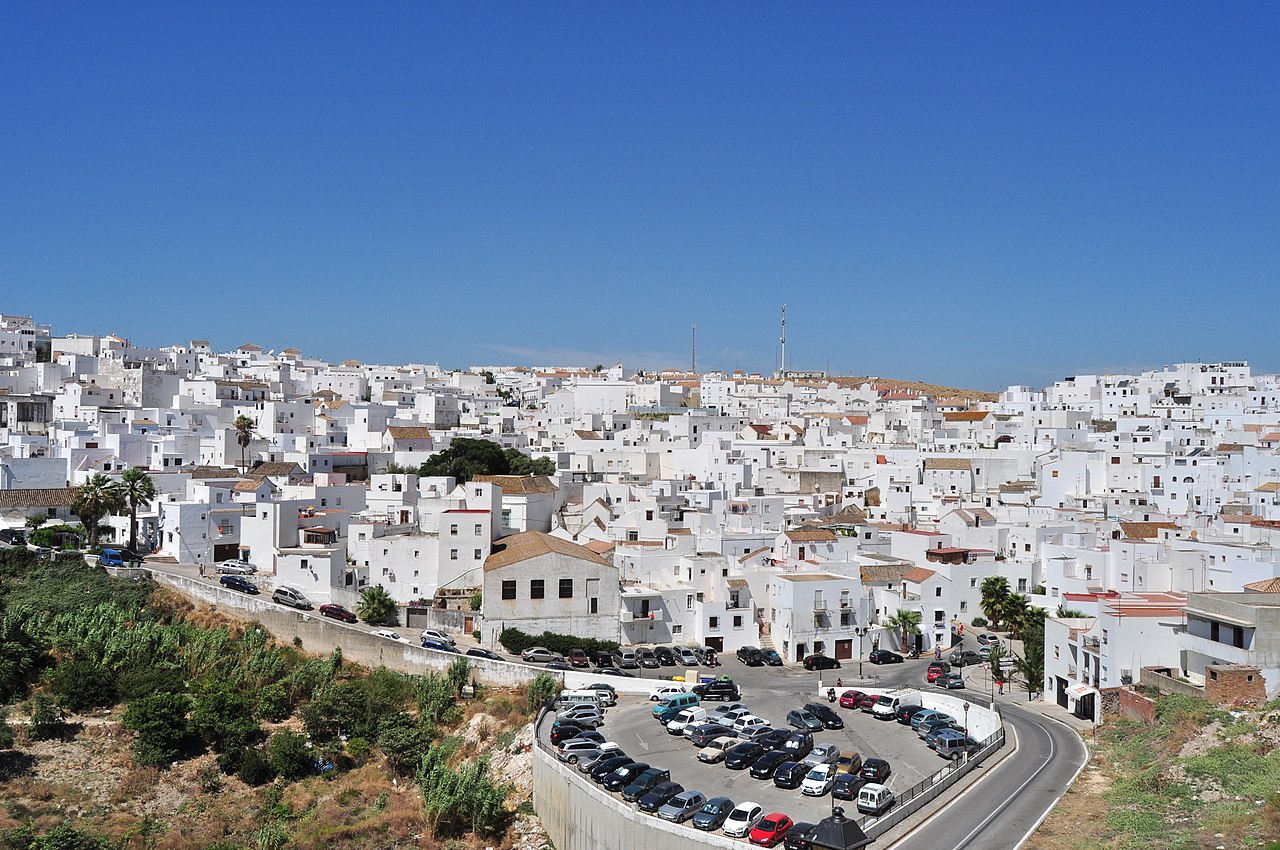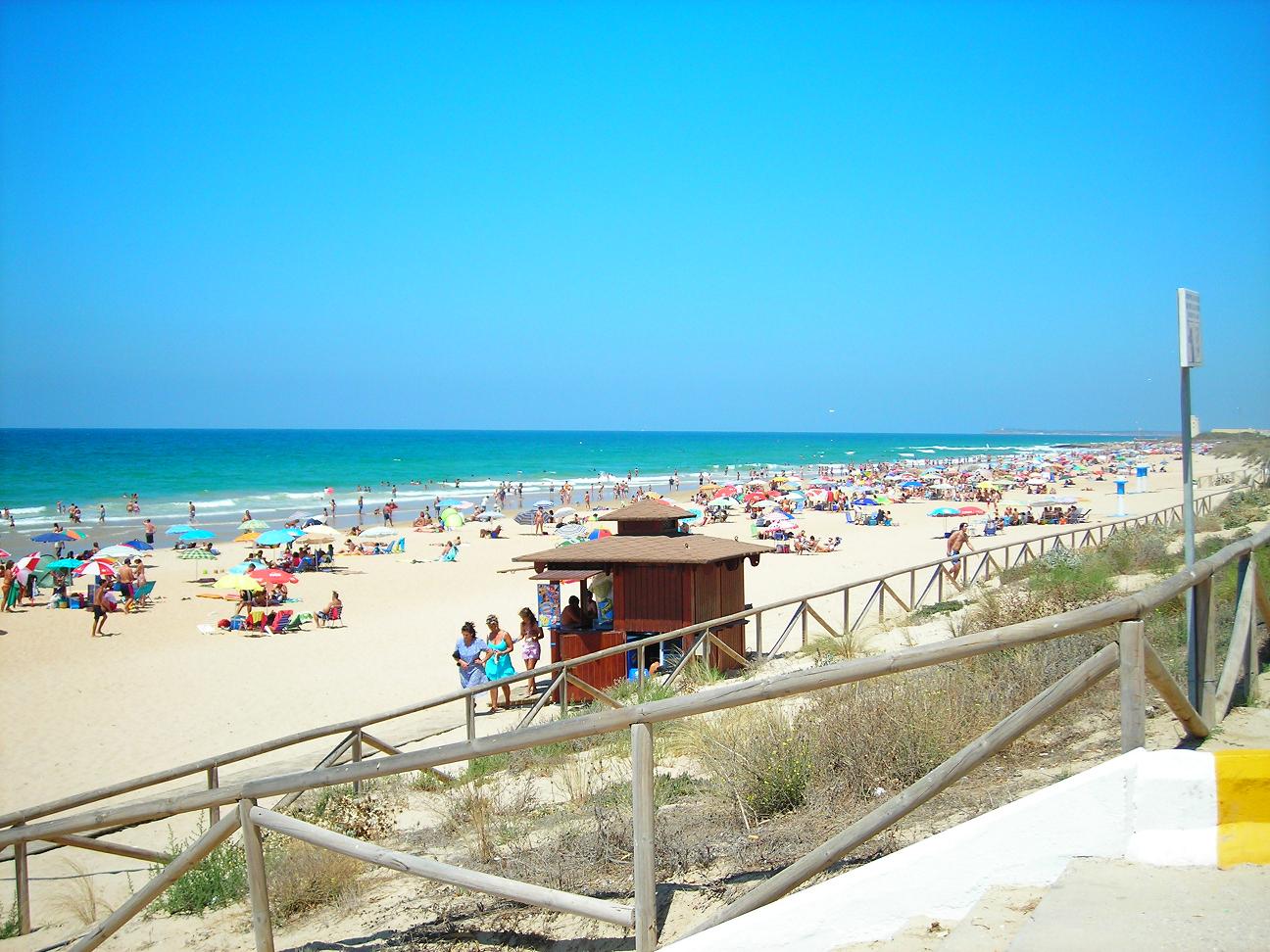
Vejer de la Frontera is a beautiful town in the province of Cadiz. Much of it is on a hill cut by the Barbate river, which gives you extraordinary views of both the region of La Janda as well as the nearby beaches of the Cadiz coast.
If you decide to visit Vejer de la Frontera you will find one of the most beautiful white villages in your area. But also a good monumental heritage, an exquisite gastronomy and pleasant baths in the Atlantic Ocean on the nearby beach of El Palmar. If you want to know Vejer de la Frontera better, we encourage you to continue reading.
What to see in Vejer de la Frontera
The Cadiz town has been declared Historic Artistic Set and is part of the network of The Most Beautiful Villages in Spain, all of which will give you an idea of the monuments that you can find in Vejer. Let's show them to you.
The wall
The town of Cadiz preserves a good part of its old wall, built in the XNUMXth century. It extends for about two kilometers and covers an area of four hectares. If you walk through it, you will also see the doors that served as access to Vejer. Among these, the arches of the Villa, Sancho IV, Puerta Cerrada and de la Segur.
Despite agreeing in name, the bastion of the Segur It has nothing to do with this last door, but with that of the Villa, which was the main one. For this reason, this defensive bulwark was built with the intention of controlling the entrance to Vejer.

Gate of the Segur
Likewise, the wall preserves two towers. The of Mayorazgo o del Homenaje preserves a belfry belonging to a disappeared chapel and offers you wonderful views of the mouth of the river Barbate. For its part, Corredera tower served to monitor and also to communicate with medina sidonia through signs.
The castle of Vejer de la Frontera
It is the other great symbol of the town of Cadiz. Its construction dates from the XNUMXth century and dominates the town from its highest point. It consists of two patios, the main and the arms, as well as crenellated walls and a horseshoe door framed by an alfiz. In the XNUMXth century it served as a residence for the Duke of Medina Sidonia, lord of Vejer.
The church of the Divine Savior
It is a temple with a basilica plan, probably built on the remains of an old mosque. It was built between the fourteenth and sixteenth centuries so it has a part of Gothic Mudejar style and other late-gothic. In its side naves you can see three chapels. But in the interior the high altar, work of the sculptor Francisco Villegas placeholder image and made in the seventeenth century.
The hermitage of Our Lady of Oliva
It was also built on the remains of another temple, in this case a Visigothic hermitage. It was built in the XNUMXth century and stands out for its whitewashed façade, a feature common to practically the entire town. As its name suggests, it houses a carving of the Virgin of the Olive, patron saint of Véjer.
Convent of the Conceptionist Nuns
Founded in the XNUMXth century by Don Juan de Amaya as a burial place for him and his wife, it stands out for its Renaissance façade, the dome that crowns its main altar and the vaulted crypts where its founders rest. Currently, it is the headquarters of the Museum of Customs and Traditions of Vejer.

Hermitage of Our Lady of Oliva
The house of Mayorazgo
Attached to the tower of the same name that we have already told you about, it is a manor house built in the XNUMXth century. You can visit its two interior courtyards, but keep in mind that it is inhabited so it is better that you ask permission to do so.
The palace of the Marquis of Tamarón
It is also an XNUMXth century manor house, but in its case next to the Segur arch. However, it offers you another attraction: it houses the Vejer History and Archeology Museum. It consists of thirteen rooms, eight of which are for archaeological objects found in the vicinity of the town, while three are for fine arts.
Plaza de España, the nerve center of Vejer de la Frontera
Its existence dates back to the XNUMXth century, when the town left its walled enclosure. Already in the twentieth century a beautiful Sevillian tiles fountain. It is also known as "Plaza de los Pescaitos".
The wind mills
It will attract your attention to find several windmills in the urban center of Vejer. Due to the strength that it has in the area, they are of Carthaginian style, more robust than those typical of La Mancha.
The aqueduct of Santa Lucia
Built in the XNUMXth century, it is located in the Rural nucleus of Santa Lucía, declared a Natural Monument for its lush vegetation, a result of the abundance of water in that area.

Plaza of Spain
Surroundings of Vejer de la Frontera
The town of Cadiz also offers you a beautiful environment. It is made up of the La Breña and Marismas del Barbate Natural Park, with areas such as Mount Quebradas or Peña Cortada, the aforementioned Rural nucleus of Santa Lucía and La Muela spring.
But, if you prefer the beach, Vejer also offers it. Specifically two, that of Mangueta, declared a protected area, and that of El Palmar, where you can also see an old coastal watchtower.
When is it better to travel to Vejer de la Frontera
The town of Cadiz is located about two hundred meters above sea level. Presents a mild climate, with pleasant winters although more rainy than summers. For their part, the latter are hot but not suffocating.
In general, it is a very pleasant climate. The only annoyance you can find is the Levante wind, which sometimes blows for several days. In any case, the best times for you to visit the town are spring and summer. In addition, the main festivals of Vejer take place in those periods: the Spring Fair and Evening of Our Lady of the Olive.
How to get to Vejer de la Frontera
The village is located about fifty-five kilometers from Cadiz already about one hundred and sixty of Sevilla. From both cities you have Bus that stop in Vejer. But, if you prefer to travel in your own car, the road you should take is the A-48 and take the 36 output.

El Palmar Beach
If you travel from further afield, you have a airport en Jerez de la Frontera with regular flights to Madrid and Barcelona. Similarly, railway lines have stations in Cadiz and in his own Jerez.
In conclusion, Weighs de la Frontera It is a beautiful white town in the province of Cádiz. It offers you a wonderful natural environment and many monuments. If to all this you add the cheerful and friendly character of its people, you have every reason to visit it.